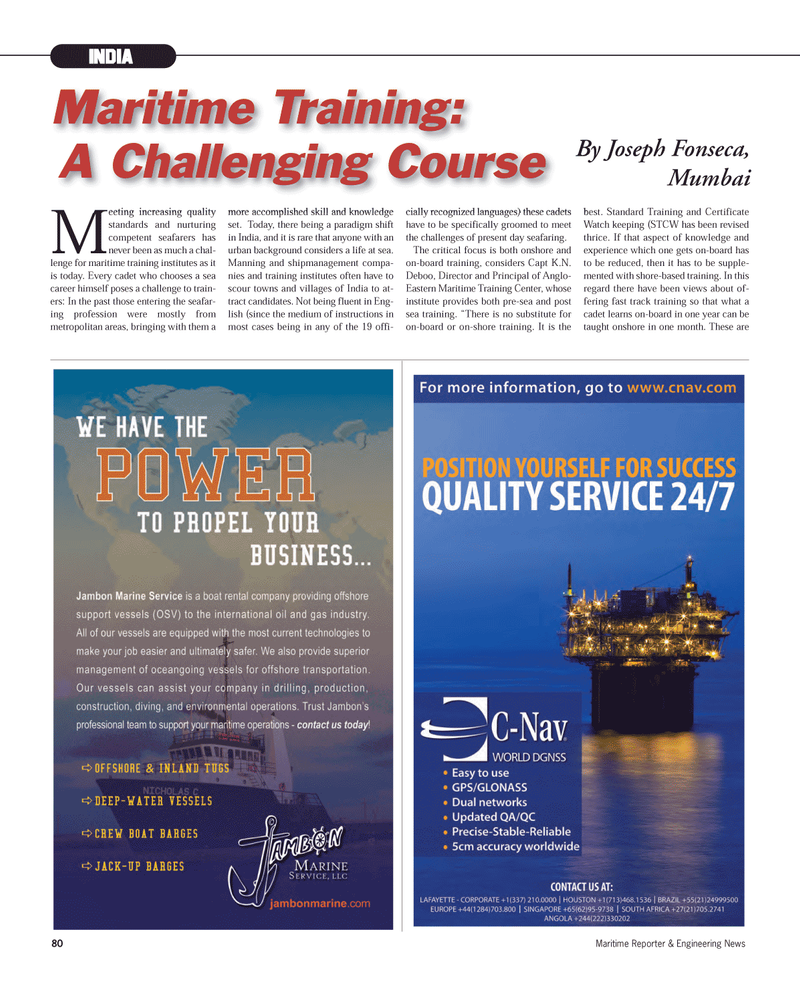
Page 80: of Maritime Reporter Magazine (November 2012)
Workboat Annual
Read this page in Pdf, Flash or Html5 edition of November 2012 Maritime Reporter Magazine
80Maritime Reporter & Engineering News Meeting increasing qualitystandards and nurturingcompetent seafarers has never been as much a chal- lenge for maritime training institutes as itis today. Every cadet who chooses a sea career himself poses a challenge to train-ers: In the past those entering the seafar- ing profession were mostly frommetropolitan areas, bringing with them amore accomplished skill and knowledge set. Today, there being a paradigm shift in India, and it is rare that anyone with an urban background considers a life at sea.Manning and shipmanagement compa-nies and training institutes often have to scour towns and villages of India to at- tract candidates. Not being fluent in Eng-lish (since the medium of instructions inmost cases being in any of the 19 offi- cially recognized languages) these cadetshave to be specifically groomed to meet the challenges of present day seafaring. The critical focus is both onshore andon-board training, considers Capt K.N.Deboo, Director and Principal of Anglo- Eastern Maritime Training Center, whose institute provides both pre-sea and post sea training. ?There is no substitute foron-board or on-shore training. It is thebest. Standard Training and Certificate Watch keeping (STCW has been revised thrice. If that aspect of knowledge and experience which one gets on-board has to be reduced, then it has to be supple-mented with shore-based training. In thisregard there have been views about of- fering fast track training so that what a cadet learns on-board in one year can betaught onshore in one month. These are IndiaBy Joseph Fonseca, Mumbai Maritime Training: A Challenging CourseMR#11 (74-81):MR Template 11/6/2012 8:18 AM Page 80

 79
79

 81
81
